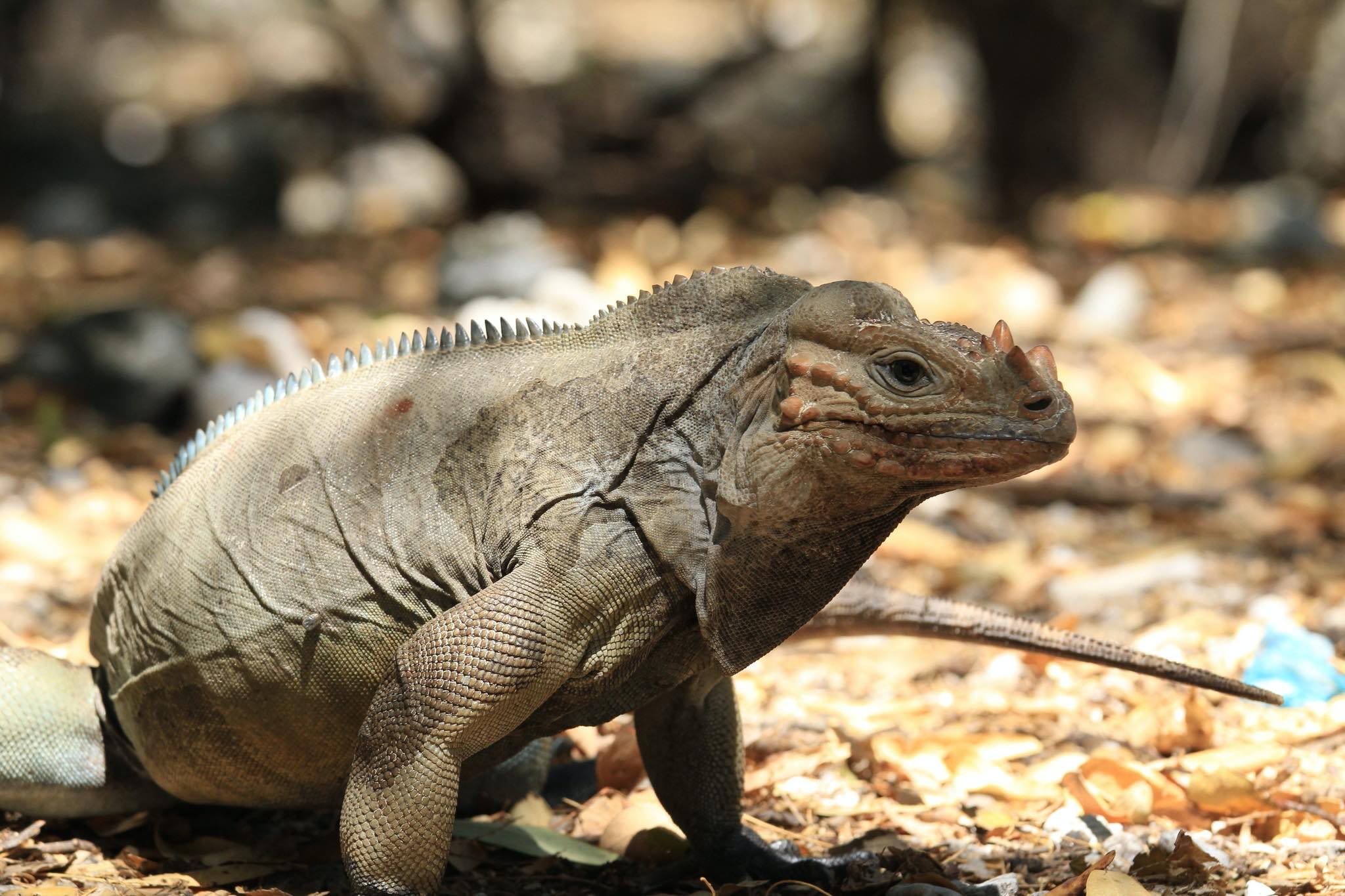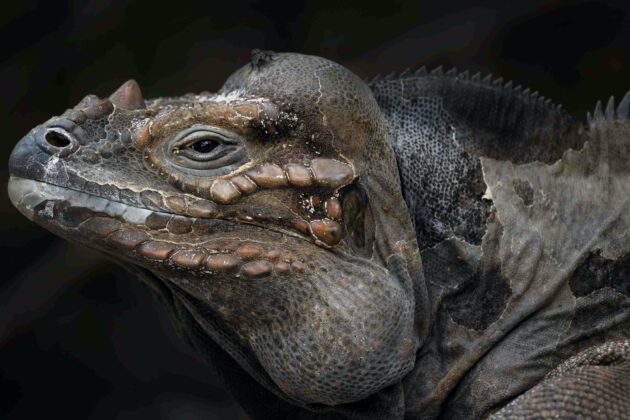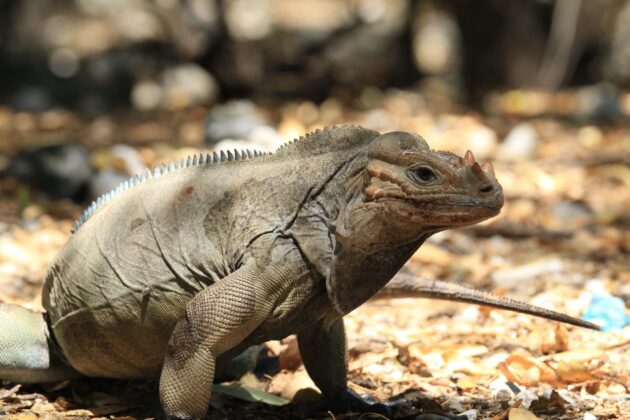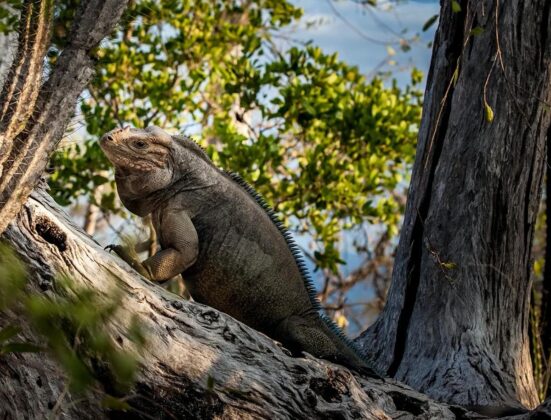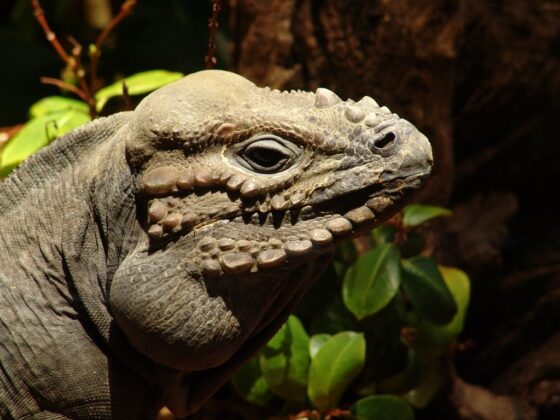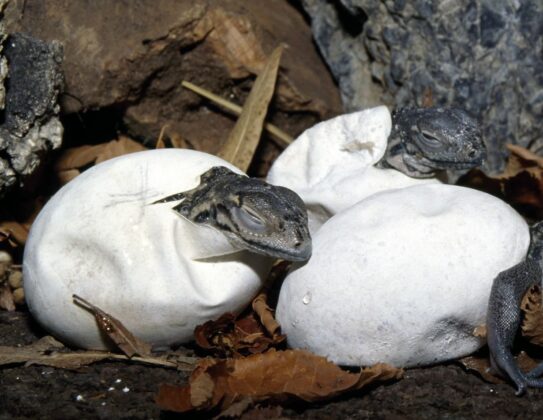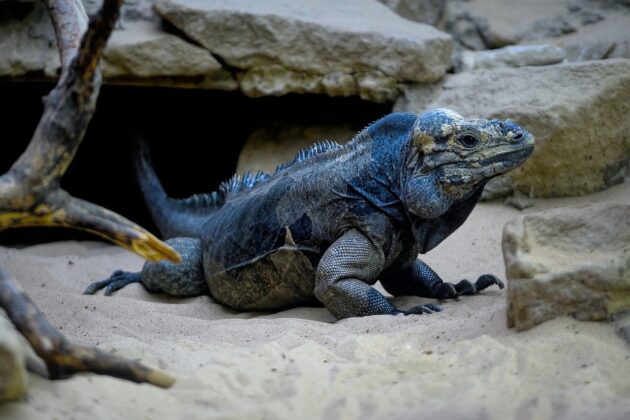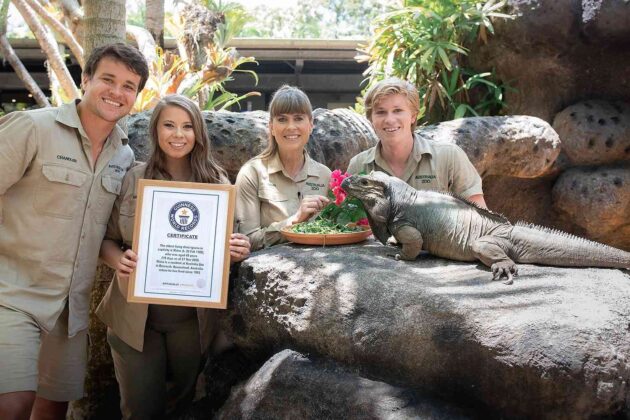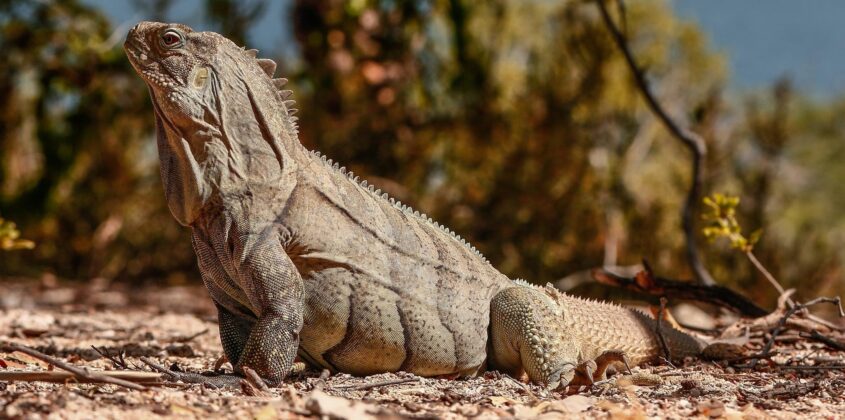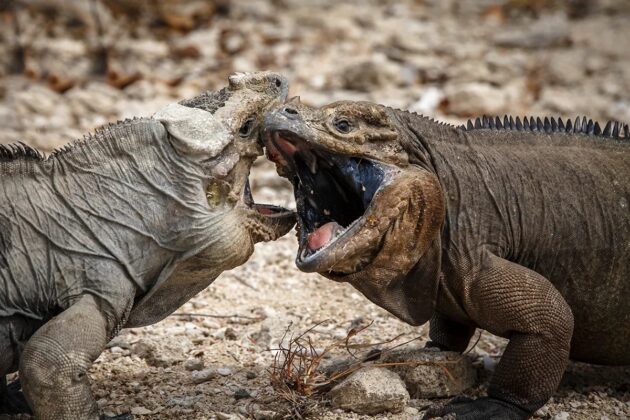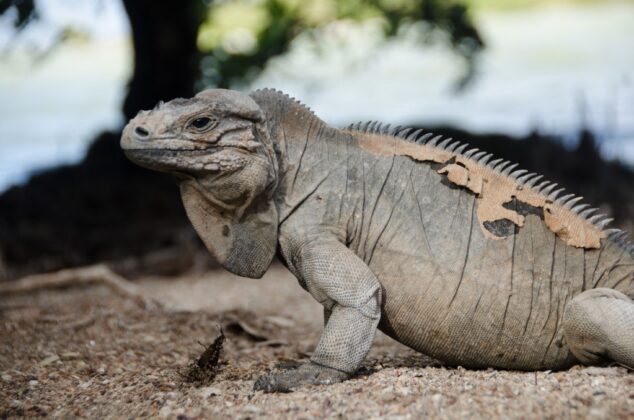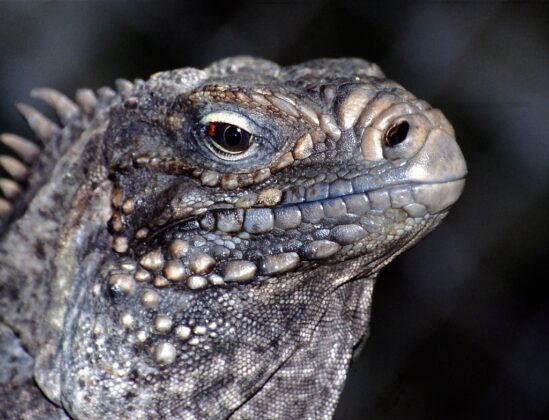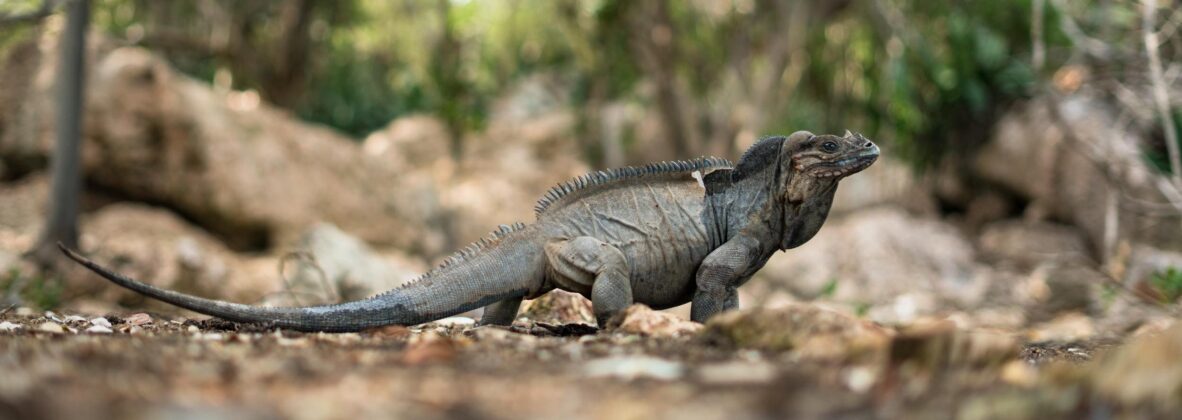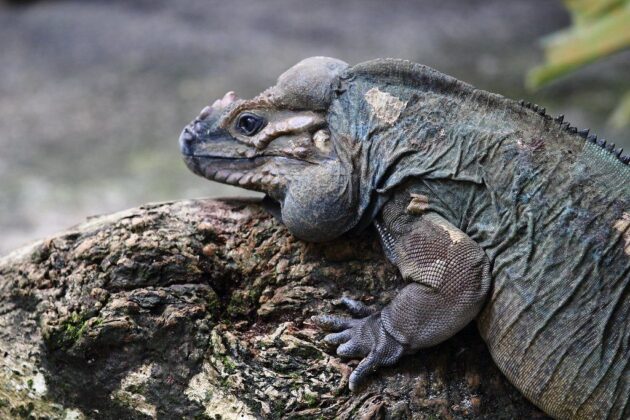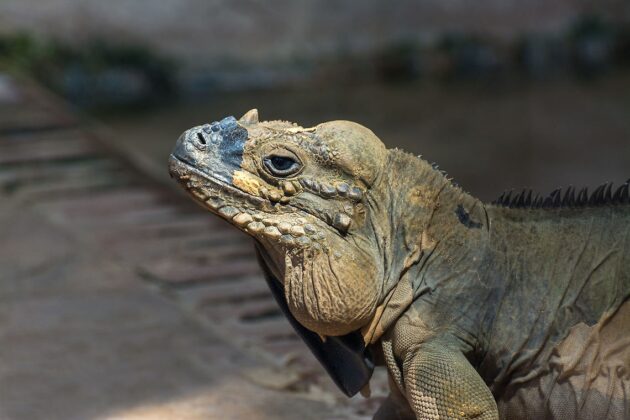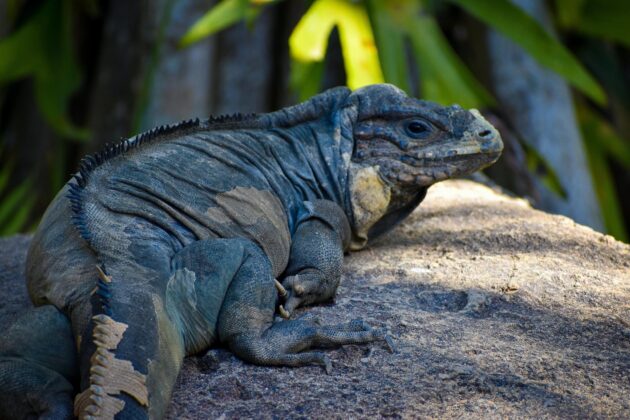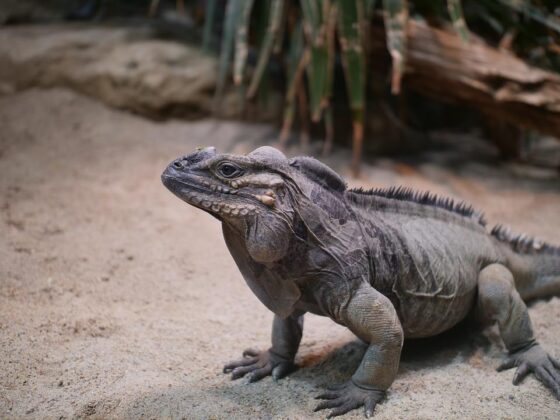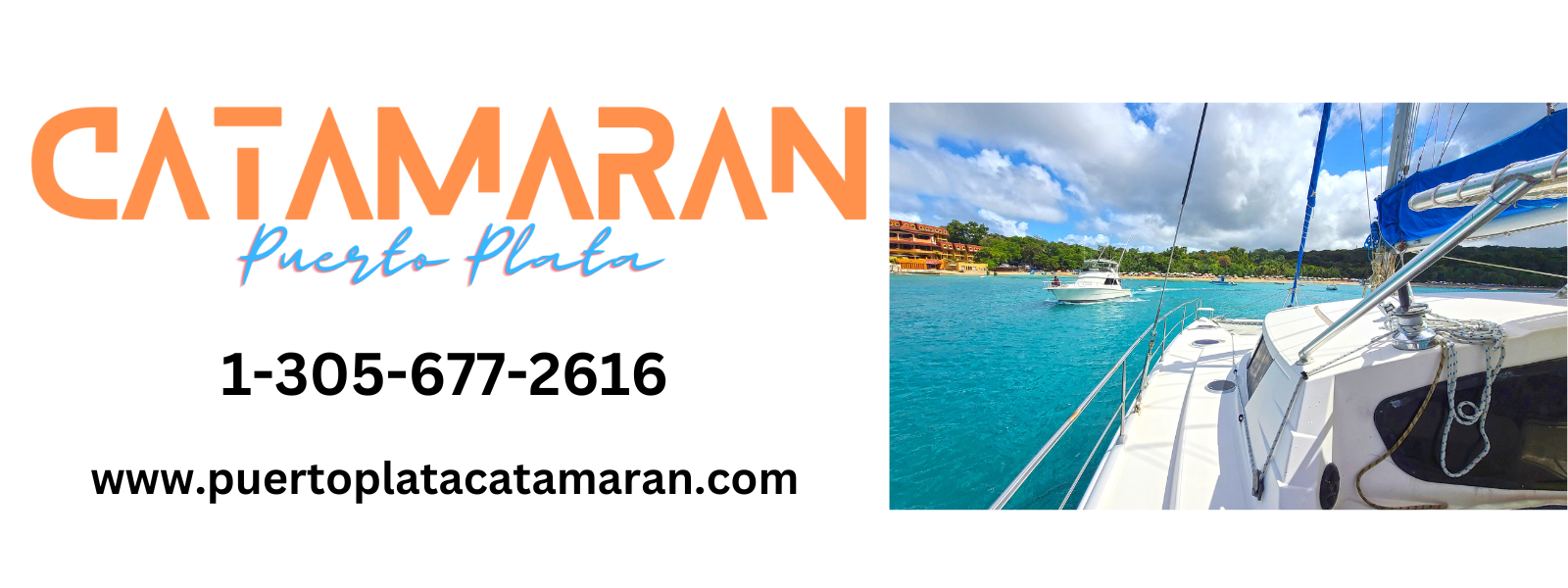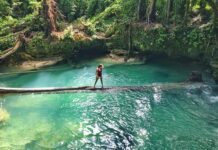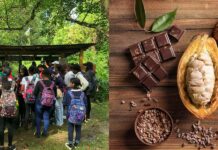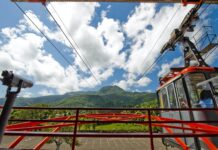Rhinoceros Iguana
Rhinoceros iguana is a living fossil, unchanged for millions of years. This adaptive species is only found in the island of Hispaniola, mostly in the Dominican Republic Southern region of Pedernales and Barahona.
The horned iguana or rhinoceros iguana (Cyclura cornuta) is a species of scaly reptile in the Iguanidae family. It is endemic to the island of Hispaniola and classified as a protected species. There are two subspecies in danger of extinction due to the pressure of man on their habitat, the cornuta stejnegeri on Mona Island and the onchiopsise cornuta on Navassa Island.
Its snout-vent length is up to 74.5 cm in males and up to 62 cm in females. The tail is as long as the head and body together. It has a more pronounced vertebral row on the neck and a crest on the body that is higher at the base of the neck and lower on the tail.
It has broader muscles at the base of the jaw and a bulging dewlap that makes the head of mature males appear larger. Three to five modified scales on the upper part of the snout give the appearance of horns, giving it the name rhinoceros iguana, and are present in both sexes.
The skin is gray, brown, or olive green and they live up to 16 years. It inhabits dry environments, rocky forests in coastal areas, which may contain cacti and other thorny plants, although they can also be found in scrub forests, semi-deciduous and dry forests to subtropical and humid forests.
Rhinoceros Iguanas are diurnal, spending the night in rock crevices, caves, burrows dug into the ground or sand, and hollow logs that they also use during the day for resting, cooling, or shelter. They are terrestrial, but they can climb if they need to reach better fruits or a more suitable position for sunbathing or to watch their territory.
PHOTO GALLERY
Males are territorial and will defend their territory aggressively. Rhinoceros Iguanas reach sexual maturity between 5 and 9 years of age. The two to three weeks of mating begin with the first rains in April and the females dig burrows when they are about to lay their eggs.
These burrows have an average tunnel of one meter before reaching the nest chamber. They deposit between 5 to 20 eggs usually between the end of June until August. Once the female lays her eggs, she covers them with earth or sand.
The young hatch 162 to 187 days later. The young are born approximately 18 cm long and are very active. An approximate population of 10,000 to 17,000 specimens in the wild is estimated, decreasing in most habitats.
Cyclura Cornuta in the media:
A rhinoceros iguana residing at the Australia Zoo has made history. The 40-year-old iguana, named Rhino, was declared the oldest living rhinoceros iguana by Guinness World Records earlier this week, the reference book announced in a blog post published Wednesday.
According to the post, Rhino nearly doubles the lifespan of the previous title holder, a wild-born specimen that lived to 22 years and 11 months at the Life Fellowship Bird Sanctuary in Seffner, Florida.
Populations are apparently stable only on Isla Beata and the tip of the Barahona peninsula within Parque Nacional Jaragua. The iguana’s diet consists mainly of plant material, such as flowers and fruits, although they also feed on insects and occasionally eggs and larger prey.
For this video we went to Cayo del las Iguanas in Laguna de Oviedo, an ideal place to appreciate these iguanas in their wild state with high probability of observation. Current classification of the species due to habitat reduction: Threatened Vulnerable
Facts on Cyclura Cornuta:
- Description: Large, heavy-bodied lizard with a uniform gray body; males have 3 horn-like protrusions on their head
- Size: Total body length of up to 1.2 m (4.5 ft.)
- Weight: 4.5-9 kg (10-20 lbs.)
- Diet: Omnivores, will eat a wide assortment of vegetable matter, invertebrates, small mammals and birds
- Incubation: 75-100 days
- Clutch Size: 15-20 eggs
- Sexual Maturity: 2-3 years
- Life Span: Up to 20 years or more
- Range: Hispaniola Island (Dominican Republic, Haiti and adjacent islands)
- Habitat: Dry rocky areas and savannas


